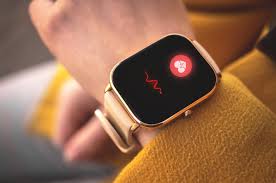Technology like insulin pumps, continuous glucose monitors (CGMs), and mobile apps can be game-changing for people living with diabetes. These tools offer better insight and control—but they can also become a source of stress when constant beeps and notifications begin to feel intrusive.

If you’ve ever felt overwhelmed by these alerts, you may be experiencing what’s called diabetes alarm fatigue—a state of mental and emotional exhaustion from the constant barrage of notifications. Over time, this fatigue can contribute to diabetes burnout and affect your overall health.
Let’s explore what diabetes alarm fatigue looks like, how it can impact your life, and what you can do to manage it effectively.
What Is Diabetes Alarm Fatigue?
Alarm fatigue happens when the number of device notifications becomes excessive, making you feel irritated, exhausted, or simply indifferent to alerts you once paid attention to.
A 2024 analysis of four studies revealed that alarm fatigue is linked to higher blood glucose levels and less time spent in a tight target range—defined as between 70 and 140 mg/dL for at least 50% of the time.
While aiming for that tighter range can improve control, it may also increase the number of alerts, which can trigger emotional stress or cause users to disengage from their diabetes management altogether.
How Different Devices Contribute to Alert Overload
Insulin Pumps
These wearable devices deliver insulin continuously and can issue various alerts, including:
-
Low battery
-
Low insulin levels
-
Site issues like occlusion or dislodgment
-
Mismatched clock settings
-
CGM data-related notifications if paired with a monitor
Alerts vary depending on the brand and user settings.
Continuous Glucose Monitors (CGMs)
CGMs provide real-time glucose data, typically every 1 to 5 minutes. These devices may trigger notifications for:
-
High or low glucose levels
-
Rapid glucose changes
-
Sensor expiration
-
Signal loss or disconnection
Traditional CGM brands include Dexcom, Abbott Libre, and Medtronic. Implantable options like the Eversense can last up to a year but still come with their own set of alerts.
How Alert Fatigue Affects Mental and Emotional Health
Though these alerts are often necessary—and sometimes lifesaving—they can also cause emotional strain, leading to diabetes distress and eventually burnout.
This kind of stress can lower your motivation, increase your A1C, and reduce your quality of life. Even caregivers—particularly parents of children with Type 1 diabetes—aren’t immune.
A 2022 study found that CGM alarms led to sleep deprivation, heightened anxiety, and emotional exhaustion among caregivers. In fact:
-
About 25% admitted becoming desensitized to frequent alarms.
-
Around 40% reported feeling anxious due to frequent alerts.
-
A third said they adjusted alarm settings just to reduce the noise.
Living With Diabetes Alert Fatigue: Real-World Experiences
For those of us who have lived with Type 1 diabetes for decades, alarms have become a constant companion. These sounds interrupt sleep, work meetings, travel, special occasions, and even moments of intimacy.
While it’s not always possible to eliminate device notifications, there are strategies to minimize their disruption and protect your mental well-being.
Tips for Reducing Diabetes Device Fatigue
Experts and people in the diabetes community recommend the following strategies:
-
Switch to vibrate mode: Use vibration alerts during the day to reduce noise overload while still staying informed.
-
Create a “sleep mode” profile: Adjust thresholds to limit non-urgent alarms at night while still receiving critical alerts.
-
Limit app alerts: If you use a smartphone app with your device, you can turn off nonessential app notifications and rely only on the device’s built-in alerts.
-
Check phone settings: Ensure that features like “Do Not Disturb” don’t block important alerts.
-
Preempt triggers: Keep an eye on patterns like insulin levels running low or glucose fluctuations to avoid unnecessary alarms.
-
Take a short “device break”: If approved by your diabetes care team, consider stepping away from your CGM or pump for a brief period to reset and recharge.
-
Talk to your care provider: Always consult with your diabetes team before changing your routine. They can help you adjust alert settings or explore alternative options to ease the strain.
Final Thoughts
The tools we use to manage diabetes can enhance our safety and independence—but they can also become overwhelming if we’re constantly bombarded by alerts.
Managing alarm fatigue starts with awareness. By adjusting settings, simplifying your routine, or even temporarily stepping back, you can maintain both your physical and mental health.
If you’re feeling burned out, don’t hesitate to reach out to your care team. Together, you can create a plan that allows you to stay in control—without feeling controlled by your devices.


Balancing device alerts can be overwhelming, but this article offers helpful tips to stay calm and in control.
Great advice on managing constant notifications without burnout. Essential read for anyone using diabetes tech.
I appreciate the practical strategies here—managing alerts mindfully makes a huge difference in daily life.